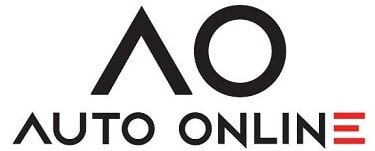- 021 928 8182

Your car is likely to be one of the biggest purchases of your life. Explore ways to ensure that it’s one you’ll be happy with.
One of the Biggest

Your car is likely to be one of the biggest purchases of your life. And the thing about big purchases is that even a 10% discount can make a massive difference to the rest of your budget.
It’s no wonder, then, that so many people rush the purchasing process when they think they see a good deal. You’re scrolling online, you see an amazing deal on a decent vehicle, and suddenly the urge to snap it up before it expires threatens to take you.
Before making any hasty decisions, first make sure to put on the brakes for a moment. Every car purchase comes with hidden costs, even when the purchase is online, and it’s important to factor these in before committing.
Again, this is likely to be one of the largest purchases of your life. Don’t make it one you’ll regret!
- Where is the car being sold from? Shipping fees will vary based on transport distance, and so can’t be fit on the price tag automatically. Online purchases make the idea of ordering a car from anywhere seem easy, but it can still be costly!
- Who’s inspecting the car? In the case of private sellers, someone needs to verify that it’s in good condition before it is shipped to you, especially if it’s a used vehicle. Inspection services aren’t free. For formal dealerships, you’ll usually be charged significant documentation fees, and these won’t always be included in the tag price.
- What’s the warranty? Online deals won’t always have a warranty baked in. In these cases, you’d have to purchase your own as an extra cost.
- What are the site’s transaction fees? Online transactions cost money, and that cost is often forwarded to the consumer.
This is, of course, on top of more traditional “hidden” costs like registration, maintenance, loan interest, fuel, insurance, vendor admin fees, and any relevant taxes/ government fees.
Note that there are some silver linings to the above: online purchases generally give you more freedom in the insurance you purchase, allowing you to go for a more reasonable option. Traditional purchases tend to saddle you with either the bank’s or the dealer’s preferred insurance providers, neither of which may be best for you. What to Do With the above in mind, how can we make wiser purchases? What can we do to make these extra costs more bearable?
- Use the tools you have! One of the biggest advantages of online shopping is that it’s easier to compare prices from multiple sellers.
- Don’t just compare the price tag and transaction fees: wherever possible, also check if the warranty or inspection is included.
- In the case of an included inspection, also check who’s doing the inspection: they need to be unbiased!
It’s also good to have some solid financial boundaries in mind. The simplest one is “if you cannot purchase it twice, you cannot afford it” but, like all simple rules, it can lack practical nuance.
Good financial advice from Steve Burns suggests that no more than 25% of your gross annual income (maximum) should be spent on purchasing your car. For people who prioritize buying their next car above all else, and don’t mind potentially delaying or even neglecting other financial goals, that number raises to 35% — about four months’ wages.
These rules hold up well regardless of how you’re financing your purchase. Speaking of which:
- Cash purchases mean you won’t be paying interest on a depreciating asset. It also ties up a lot of money NOW in exchange for tying up much less money going forward. Consider your other financial goals, and if they’d be better served by you having more total cash in pocket, or by you having more monthly income to play around with.
- Loans or bank instalments make nicer cars more accessible, but invariably they’ll end up more expensive than if you purchased the vehicle outright. The higher total costs do open up some questions around the 25% and 35% rules, and we’ll get back to that just now.
- Rent-to-buy or lease-to-buy agreements are like loans, except you’re just getting approved for rental, not approved for a loan. At the end of the lease, you’ll have the option to purchase the car at a massively reduced price, to reflect all the money you’ve already spent on monthly payments. Note that, even when reduced, a car’s price can still be substantial, so read all agreements carefully.
Note that leased cars usually come with other conditions as well, such as requirements on how often you use the car, how you must maintain it, and so on.
When it comes to leases or loans, one way to keep things reasonable is to use the 20/4/10 rule, which states:
- The deposit or down payment needs to be 20% of the total price.
- The repayment/ lease structure needs to allow the vehicle to be bought/ paid off within four years.
- Monthly payments (yes, including add-ons like maintenance or insurance) must total no more than 10% of your monthly budget.
These rules aren’t set in stone but the further you go beyond them, the more likely you are to run into financial problems.
Closing the Deal
Once you’ve set a budget around the above guidelines and have found a car that’s within your range, here’s a few things you can do to help offset the hidden costs and get the best deal possible:
- Know your boundaries. It’s okay to refuse a deal that doesn’t work for your budget, and you might find what you’re looking for from another seller. Do your research so you can be confident in this area.
- Open with your lowest bid. Don’t be unreasonable: it’s fine to offer a cheap price, but make sure it’s within industry standards so the seller knows you’re serious. The seller will likely counter with something much higher, and then you’ll likely be able to reach a compromise from there.

- Minimize add-ons. Most are unnecessary so, unless you know exactly what you want, don’t get talked into optional extras. They can easily drive your dream car outside your budget range.
- When it comes to online dealerships, request a personal inspection of the vehicle, even if it’s over video call. Being refused here usually allows you to negotiate a lower price. If a private seller refuses, the deal should be called off unless they give you a drastically lower price.
- Consider buying used. New cars depreciate rapidly within the first three years, which is bad if you consider your car to be an investment. Buying used, in this case, helps remove some of the sting and reduce losses when reselling. A used vehicle can also easily be 40-50% cheaper than a new equivalent, while still having many years of service left. If it passes inspection from a qualified mechanic, and you have access to the car’s service history to spot where past failures may have occurred, there’s usually little to worry about.
For your online vehicle purchasing needs contact Auto Online on https://auto.online/contact/
